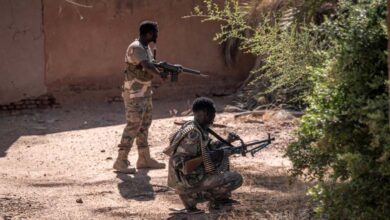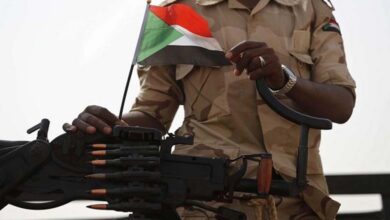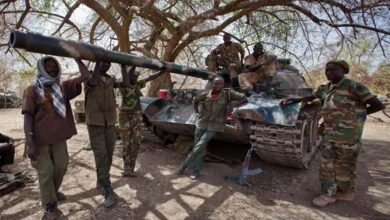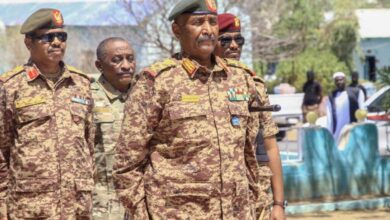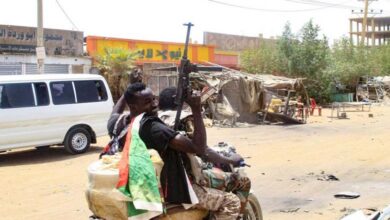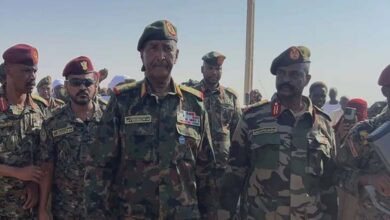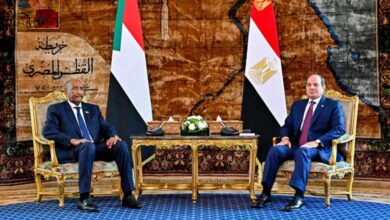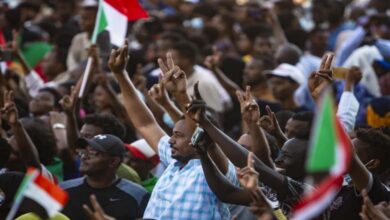From Houthis to al-Burhan… Iranian drones pose a threat to the region
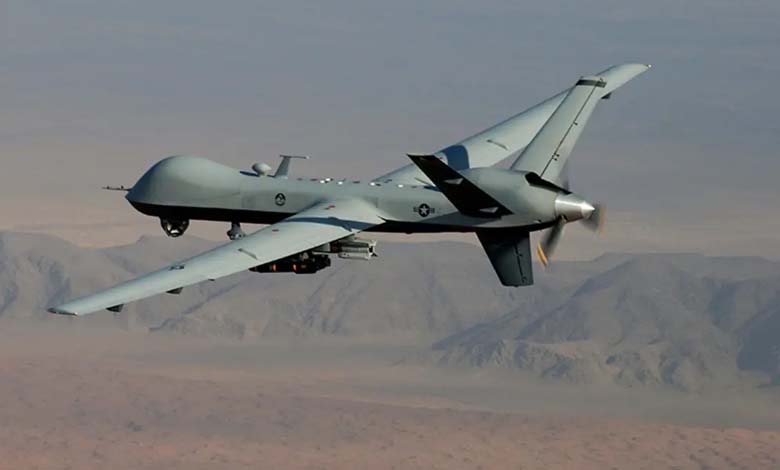
Washington has long affirmed that Iran supports the Houthi group in Yemen, as well as several armed factions in Iraq or Syria, and naturally Hezbollah in Lebanon. However, these accusations have recently been reiterated more forcefully by military officials at the Pentagon, with the escalation of Houthi attacks on commercial ships in the Red Sea.
Just as in Yemen, Iran is competing for influence in Africa, benefiting from al-Burhan and the Muslim Brotherhood and the sectarian networks it has successfully created in some important African countries such as Nigeria, as well as on networks established by its ally Hezbollah within the Lebanese diaspora in Africa, which have a deep historical significance.
How does Tehran support the Houthis and Sudan?
Reports indicate Iran’s support for Houthi attacks and its efforts to strengthen its influence in vital areas such as the Red Sea and Africa, especially through cooperation with the Sudanese army, complex geopolitical shifts that reveal Iranian interference in the Yemeni conflict.
The Red Sea is a vital region for global trade and maritime navigation security, making any Iranian influence in this area a matter requiring close monitoring. Talks about expanding Iran’s influence in Africa through cooperation with the Sudanese army and the Muslim Brotherhood indicate another level of regional influence.
Tehran’s support for the Houthis
Reuters quoted regional and Iranian sources as saying that leaders from the Iranian Revolutionary Guard and Hezbollah were present in Yemen to assist in directing Houthi attacks on ships in the Red Sea and supervising them. The sources stated that Iran intensified its arms supplies to the Houthis following the war in Gaza, providing them with advanced drones, anti-ship cruise missiles, precision-guided ballistic missiles, and medium-range missiles.
The sources also mentioned that leaders and advisors from the Revolutionary Guard also provide intelligence data and support to identify ships passing through the Red Sea daily towards Israel for targeting.
Reuters also quoted an Iranian source saying that a group of Houthi fighters were in Iran last month and were trained at a base for the Revolutionary Guard to learn about new technology and the use of missiles.
Tehran’s support for al-Burhan and the Muslim Brotherhood
Western officials have reported that Iran “supplied the Sudanese army with drones (UAVs),” according to Bloomberg. The agency confirmed that “satellites captured images of an Iranian (Mohajer 6) drone this month at a base controlled by the army north of Khartoum.” Three Western officials, who requested anonymity to disclose sensitive information, said that “Sudan received shipments of a (Mohajer 6) drone, which is a single-engine UAV manufactured in Iran and carries precision-guided ammunition.”
Analysts who examined satellite images confirmed the presence of the UAV in the country. Analysts estimate that arming the Sudanese army with Iranian UAVs “enhances Iran’s military influence in the Middle East,” as it supports armed groups in Gaza, Hezbollah in Lebanon, and the Houthis in Yemen, as well as groups in Syria and Iraq.
Iranian drones besiege Saudi Arabia According to Bloomberg, Iran supplying al-Burhan with its drones has contributed to Saudi Arabia’s isolation from all directions, as these drones, remotely controlled, can cover every inch of Saudi territory. This scenario demonstrates an unprecedented advancement in Iran’s ability to exert strategic influence in the Gulf region.
With the rapid development of drone technology, their use as a strategic tool could lead to a fundamental change in regional dynamics. Iran has succeeded in developing military capabilities including a wide range of maritime and aerial drone systems, which raises concerns among neighboring countries and increases tension in the region.
From al-Burhan to Iran… Iranian drones pose a threat to the region
Washington has long asserted that Iran supports the Houthi group in Yemen, as well as numerous armed factions in Iraq or Syria, and naturally Hezbollah in Lebanon. However, these accusations have recently been reiterated more forcefully by military officials in the Pentagon, with the escalation of Houthi attacks on merchant ships in the Red Sea.
Just as the situation in Yemen, Iran is extending its competition to Africa, benefiting from its alliance with Burhan, the Muslim Brotherhood, and religious networks it has successfully established in some important African countries like Nigeria, as well as networks created by its ally Hezbollah within the Lebanese community in Africa, which have a deep historical significance.
How does Tehran support the Houthis and Sudan?
Reports indicate Iran’s support for Houthi attacks and the strengthening of its influence in vital regions such as the Red Sea and Africa, especially through cooperation with the Sudanese army, leading to complex geopolitical shifts, as Iranian interference becomes evident in the Yemeni conflict.
The Red Sea is a vital region for global trade and maritime security. Therefore, any Iranian influence in this area requires careful monitoring. Talk of expanding Iran’s influence in Africa through cooperation with the Sudanese army and the Muslim Brotherhood suggests another level of regional influence.
Tehran’s support for the Houthis
Reuters reported, citing regional and Iranian sources, that commanders from the Iranian Revolutionary Guard and Hezbollah were present in Yemen to assist in directing Houthi attacks on ships in the Red Sea and supervising them. The sources stated that Iran intensified arms supplies to the Houthis following the war in Gaza, providing them with advanced drones, anti-ship cruise missiles, precision-guided ballistic missiles, and medium-range missiles.
The sources also mentioned that commanders and advisors in the Revolutionary Guard also provide data and intelligence support to identify ships passing through the Red Sea daily heading towards Israel for targeting.
Reuters also quoted an Iranian source stating that a group of Houthi fighters were in Iran last month, where they were trained at a Revolutionary Guard base to learn about new technology and missile use.
Iran’s support for al-Burhan and the Muslim Brotherhood
Western officials have stated that Iran “supplied the Sudanese army with drones” according to Bloomberg. The agency confirmed that “satellites took pictures of an Iranian Mahajer-6 drone this month at a base under army control north of Khartoum”.
Three Western officials, who requested anonymity to disclose sensitive information, stated that “Sudan received shipments of Mahajer-6 drones, single-engine drones manufactured in Iran, carrying precision-guided munitions”. Analysts who examined satellite images confirmed the presence of the drone in the country.
Analysts estimate that arming the Sudanese army with Iranian drones “enhances Tehran’s military influence in the Middle East”, as it supports armed groups in Gaza, the Lebanese Hezbollah, and the Houthis in Yemen, as well as groups in Syria and Iraq.
Iranian drones besiege Saudi Arabia
According to Bloomberg, Iran supplying drones to al-Burhan contributed to encircling Saudi Arabia from all directions. These drones, remotely controlled, can cover every inch of Saudi Arabian territory. This scenario reflects an unprecedented advancement in Iran’s ability to exert strategic influence in the Gulf region.
Given the rapid development of drone technology, their use as a strategic tool could lead to a radical change in regional dynamics. Iran has succeeded in developing military capabilities that include a wide range of maritime and aerial drone systems, raising concerns among neighboring countries and escalating tensions in the region.


